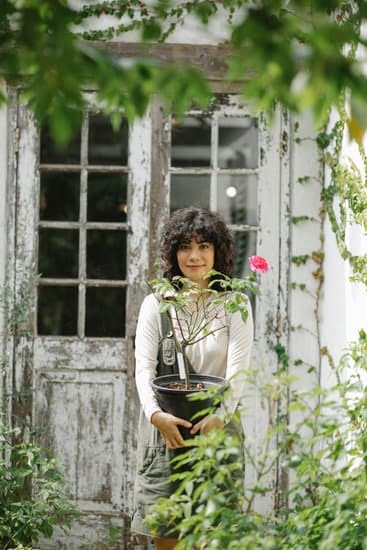Urban gardening ideas for urban environments have become increasingly popular as more people choose city living. With limited space and resources, urban gardening offers a creative solution to bring greenery into urban settings. This article will explore the benefits of urban gardening, tips for successful small-space gardening, and innovative techniques such as vertical gardening and rooftop gardens.
As cities continue to grow and expand, the need for green spaces becomes more vital. Urban gardening not only beautifies the concrete jungle but also provides numerous benefits to city dwellers. From improving air quality to promoting mental well-being, urban gardening offers a myriad of advantages that will be discussed in this article.
In addition to discussing the benefits of urban gardening, this article will also provide practical tips and creative ideas for choosing the right plants and utilizing limited spaces in urban settings. Whether you have a balcony, rooftop, or small backyard, there are various strategies and innovative container gardening ideas that can help you create your own urban oasis.
Benefits of Urban Gardening for City Dwellers
Urban gardening offers a multitude of benefits for city dwellers looking to connect with nature and enjoy the rewards of growing their own plants, vegetables, and herbs. One of the key advantages is the opportunity to have access to fresh, organic produce right at your doorstep.
This can lead to substantial cost savings over time, as well as reducing your carbon footprint by cutting down on transportation emissions from grocery store produce. Additionally, the act of gardening itself provides an excellent source of physical activity and stress relief, helping city residents maintain a healthier lifestyle.
Another benefit of urban gardening is its positive impact on the environment. By cultivating green spaces within cities, urban gardeners contribute to improved air quality and biodiversity in their local area. This helps mitigate the heat island effect in urban environments by providing shade and reducing temperatures. Furthermore, incorporating plant life into urban settings can also contribute to stormwater management through natural means such as increased evaporation and transpiration.
Moreover, urban gardening creates a sense of community among city dwellers who share a love for botany and horticulture. Participating in communal gardens or neighborhood planting initiatives fosters social interaction and support among residents who share a common interest in sustainable living practices. These collective efforts can help build stronger communities while promoting environmental awareness and education in urban areas.
| Benefits of Urban Gardening | Impact |
|---|---|
| Access to fresh produce | Cost savings and reduced carbon footprint |
| Positive impact on the environment | Improved air quality, reduced heat island effect, and stormwater management |
| Sense of community | Social interaction and support among city residents |
Choosing the Right Plants for Urban Gardening
When it comes to urban gardening in limited spaces, choosing the right plants is essential for a successful and thriving garden. The key is to select plants that are well-suited for urban environments, such as those that can adapt to small containers, limited sunlight, and pollution.
One of the most important factors to consider when choosing plants for urban gardening is the available space. For those with small balconies or windowsills, compact and dwarf varieties of vegetables, herbs, and flowers are ideal. These include cherry tomatoes, lettuce, peppers, and dwarf sunflowers. For those with a bit more space, container-friendly fruit trees like citrus and figs can also be considered.
Another crucial consideration is the amount of sunlight your urban garden receives. Most urban environments have buildings and structures that may block sunlight, so it’s important to choose plants that can thrive in partial or dappled shade. Shade-tolerant plants like hostas, ferns, begonias, and impatiens are great choices for these conditions.
In addition to space and sunlight considerations, it’s important to take into account air pollution levels in urban areas. Certain plants are more resistant to air pollution and can help improve air quality. Examples of these “clean air” plants include spider plants, peace lilies, snake plants, and Boston ferns.
| Plant Type | Ideal Plant Varieties |
|---|---|
| Vegetables | Cherry tomatoes, lettuce, peppers |
| Flowers | Dwarf sunflowers, begonias, impatiens |
| Herbs | Basil, cilantro, rosemary |
By carefully selecting the right plants based on space availability, sunlight exposure, and pollution resistance for your specific urban environment you will be able to create a flourishing urban garden in even the smallest of spaces. With some creativity and careful planning you can transform your balcony or rooftop into a green oasis full of life.
Creative Container Gardening Ideas for Limited Spaces
When it comes to urban gardening in limited spaces, one of the most creative and practical solutions is container gardening. This method allows city dwellers with minimal outdoor or indoor space to grow a variety of plants, regardless of their living situation. From flowers to herbs and even vegetables, container gardening offers endless possibilities for adding greenery to urban environments.
Whether you have a small balcony, rooftop, or even just a windowsill, there are numerous urban gardening ideas for urban environments that involve using containers. For those with limited outdoor space, hanging planters can be utilized to make the most of vertical space.
Windowsill herb gardens are perfect for those living in apartments or condos without access to traditional garden plots. Additionally, repurposed items such as old buckets, tin cans, or even wooden crates can be used as unique and stylish containers for growing plants in urban settings.
When choosing plants for container gardening in limited spaces, it’s important to consider the specific conditions of your environment. For those with little natural light, shade-loving plants like ferns or peace lilies may be the best choice.
If you have a sunny balcony or rooftop, then sun-loving herbs like basil and rosemary or flowering plants such as petunias and marigolds may thrive in your containers. The key is to assess your available space and environmental conditions before selecting the right plants for your urban garden.
Vertical Gardening Techniques for Urban Settings
When it comes to urban gardening ideas for urban environments, vertical gardening is a fantastic option for those with limited space. By utilizing vertical space, urban dwellers can maximize their growing area and create a lush garden in even the smallest of spaces. Here are some techniques for successful vertical gardening in urban settings:
1. Vertical planters: Invest in wall-mounted or hanging planters to grow herbs, flowers, and even vegetables on the walls of your balcony or patio. This not only adds greenery to your outdoor space but also makes good use of unused vertical areas.
2. Trellises and arbors: Install trellises or arbors to support climbing plants such as tomatoes, cucumbers, or peas. These vertical structures not only save space but also provide a beautiful backdrop for your garden.
3. Living walls: Create a living wall by installing modular planting containers on a fence or exterior wall. This innovative technique not only adds visual appeal to urban landscapes but also helps improve air quality and reduce noise pollution.
With these vertical gardening techniques, urban dwellers can transform their small outdoor spaces into lush and productive gardens, making the most out of their limited urban environment.
Overall, vertical gardening offers creative solutions for maximizing space in urban settings and provides an opportunity for city dwellers to reconnect with nature right at their doorstep. Whether it’s through the use of vertical planters, trellises, or living walls, there are numerous ways to bring the benefits of gardening into the heart of the city.
Utilizing Rooftops and Balconies for Urban Gardening
Rooftops and balconies are often overlooked spaces that can be transformed into thriving urban gardens. Utilizing these areas for urban gardening not only maximizes the use of limited space, but also brings greenery and beauty to urban environments. Whether you have a small balcony or a spacious rooftop, there are plenty of creative ideas to turn these spaces into lush, productive gardens.
Here are some urban gardening ideas for rooftops and balconies:
- Container Gardening: Utilize various containers such as pots, hanging baskets, and window boxes to grow a variety of plants. Herbs, vegetables, flowers, and even small fruit trees can thrive in containers on rooftops and balconies.
- Vertical Gardening: Make the most of vertical space by installing trellises, wall-mounted planters, or vertical garden systems. This allows you to grow more plants while saving valuable floor space.
- Roof Gardens: Create a rooftop oasis by installing raised beds or planter boxes directly on the roof surface. Consider using lightweight soil mixes and providing proper drainage to ensure the structural integrity of the building is not compromised.
- Balcony Greenhouses: For avid gardeners with limited outdoor space, compact greenhouse kits designed for balconies can provide an opportunity to grow a wider variety of plants and extend the growing season.
When utilizing rooftops and balconies for urban gardening, it’s important to consider factors such as sunlight exposure, wind conditions, weight restrictions, and access to water sources. With proper planning and creativity, these underutilized spaces can become thriving urban oases that contribute to a greener, more sustainable city environment.
Tips for Successful Urban Gardening in Small Spaces
When it comes to urban gardening in small spaces, there are several tips and techniques that can help city dwellers make the most out of their limited outdoor areas. One of the essential urban gardening ideas for urban environments is to make use of vertical space. Hanging planters, trellises, and wall-mounted containers can maximize the available space, allowing for a diverse and abundant garden even in a small area.
Another tip for successful urban gardening in small spaces is to choose compact and dwarf varieties of plants. These types of plants are well-suited for container gardening and require minimal space while still producing a bountiful harvest. Additionally, utilizing multi-level plant stands or tiered shelving can create more room for greenery without taking up valuable floor space.
Furthermore, city gardeners should take advantage of natural light by positioning their plants strategically. Placing containers near windowsills or on sunny balconies can ensure that they receive adequate sunlight for healthy growth. In addition, incorporating reflective surfaces such as mirrors or metallic containers can help maximize light exposure for urban plants. By implementing these tips, aspiring urban gardeners can cultivate a thriving garden even in the midst of a bustling city.
Community Gardening and Urban Green Spaces
Benefits of Community Gardening
Community gardening is a fantastic way to bring people together in urban environments. It not only promotes a sense of community and teamwork, but it also allows individuals to learn from one another and share their knowledge about urban gardening ideas for urban environments.
Additionally, community gardens provide access to fresh produce for those who may not have the space or resources to garden on their own. This can have a positive impact on food security and overall health in urban areas.
Creating Urban Green Spaces
Urban green spaces play an important role in providing city dwellers with areas to relax, unwind, and connect with nature. These spaces can be utilized for community gardens, recreational activities, or simply as peaceful retreats within the hustle and bustle of the city. By incorporating green spaces into urban planning, cities can improve air quality, reduce the urban heat island effect, and provide habitat for local wildlife.
Challenges and Solutions
Despite the numerous benefits of community gardening and urban green spaces, there are also challenges to consider. Limited access to land, soil contamination, and lack of funding are just a few obstacles that community gardeners may face. However, by working together and partnering with local organizations or government agencies, these challenges can be overcome. Community members can advocate for policies that support urban gardening initiatives and work towards creating more accessible green spaces within their neighborhoods.
Overcoming Challenges of Urban Gardening in Urban Environments
When it comes to urban gardening in urban environments, there are certainly some challenges that gardeners may face. However, with the right strategies and techniques, these challenges can be overcome, allowing city dwellers to enjoy the benefits of growing their own food and creating green spaces in their communities.
Limited Space
One of the biggest challenges of urban gardening is dealing with limited space. In a city setting, many people only have small balconies, patios, or even just windowsills to work with. However, creative container gardening ideas can make a big difference. By utilizing vertical space and choosing compact plants, urban gardeners can maximize their growing area. Hanging baskets, wall-mounted planters, and window boxes are all great options for adding greenery to small spaces.
Sunlight and Pollution
Another challenge of urban gardening is dealing with limited sunlight and air pollution. Tall buildings and concrete surfaces can create shadows and block sunlight from reaching plants. Additionally, air pollution can have a negative impact on plant growth. To address this issue, urban gardeners can choose plants that are tolerant of low light conditions and air pollution. They can also invest in grow lights to supplement natural sunlight for their indoor plants.
Water Availability
In an urban environment, access to water for gardening purposes may be limited. Urban gardeners need to be mindful of water conservation practices and choose drought-tolerant plants that require less frequent watering. Additionally, collecting rainwater in barrels or using drip irrigation systems can help maximize water efficiency in small urban gardens.
By finding creative solutions to these challenges, such as maximizing space with vertical gardening techniques and choosing the right plants for limited sunlight and polluted air conditions, urban gardeners can successfully grow a thriving garden even in the midst of a bustling cityscape.
Conclusion
In conclusion, urban gardening offers a plethora of benefits for city dwellers, including access to fresh produce, the opportunity to connect with nature, and the chance to contribute to a sustainable environment. The trend towards urban gardening is only expected to continue growing as more people embrace city living. With the right plants, creative container gardening ideas, vertical gardening techniques, and the utilization of rooftops and balconies, there are countless opportunities for urban residents to bring greenery into their lives.
As urban populations increase and available space diminishes, it’s becoming increasingly important for city dwellers to find innovative ways to incorporate nature into their surroundings. Urban gardening presents an ideal solution, allowing individuals to cultivate their own fruits, vegetables, and herbs within limited spaces.
By taking advantage of community gardening initiatives and creating urban green spaces, residents can work together to foster a sense of environmental stewardship while enjoying the physical and mental health benefits that come with tending a garden.
Overall, the future of urban gardening in urban environments is bright. As more people seek connection with nature in their daily lives, the demand for creative solutions for growing plants within limited city spaces will continue to rise. By staying informed about best practices for successful urban gardening in small spaces and promoting community involvement in green initiatives, we can look forward to healthier and more sustainable urban environments in the years ahead.
Frequently Asked Questions
What Plants Are Best for Urban Gardening?
When it comes to urban gardening, it’s best to focus on plants that are well-suited for small spaces and can thrive in containers. Herbs like basil, mint, and rosemary are great options, as well as compact vegetables like cherry tomatoes and peppers. Succulents and ornamental plants also work well in urban gardens.
How Do You Garden in Urban Areas?
Gardening in urban areas requires some creativity due to limited space. Vertical gardening is a popular option, using walls or trellises to grow plants upwards instead of outwards. Container gardening is also key, using pots, hanging baskets, or window boxes to maximize space. Community gardens or rooftop gardens are other options for urban gardeners.
What Does Urban Gardening Do for the Environment?
Urban gardening has several environmental benefits. It helps reduce the heat island effect in cities by providing natural cooling through plant transpiration. Gardens also help capture rainwater, reducing runoff and preventing soil erosion.
Additionally, urban gardens can improve air quality by absorbing carbon dioxide and releasing oxygen while supporting biodiversity in urban areas. Overall, urban gardening contributes to a healthier environment within cities by adding green spaces and promoting sustainable practices.

Welcome to my gardening blog! I am passionate about plants and enjoy sharing my knowledge and experiences with others. In this blog, I will write about everything related to gardening, from tips on how to get started to updates on my own garden projects.





